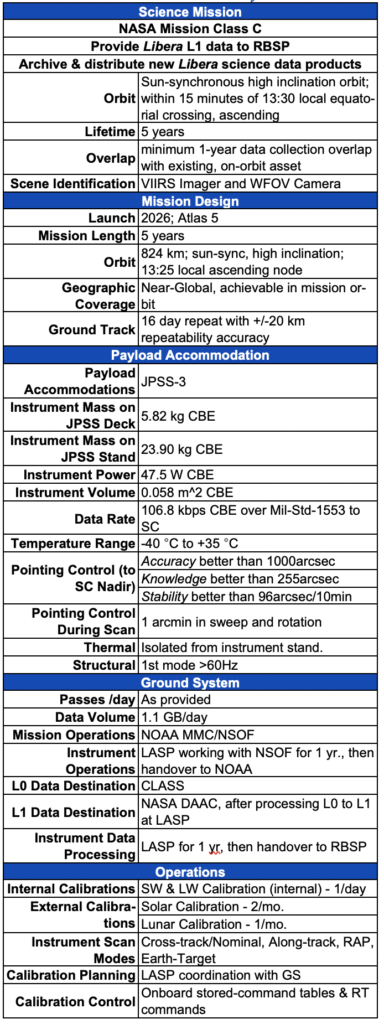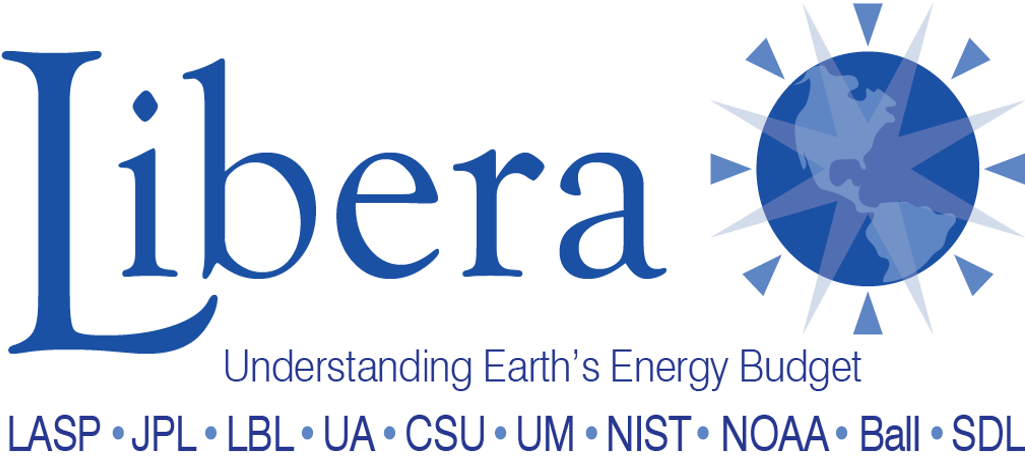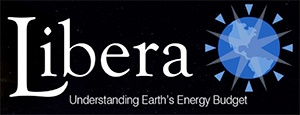Perturbations to the ERB are an expression of climatic changes and fundamentally linked to changes in the hydrological cycle and dynamics of the ocean and atmosphere. Through CERES, NASA is committed to measuring broadband shortwave (SW) and longwave (LW) radiances at the top-of-the-atmosphere (TOA) with unprecedented accuracy, and to provide climate data records (CDRs) of radiative fluxes at the TOA and the surface. Libera addresses NASA’s Earth Venture Continuity (EVC) call by preventing a gap in the ERB record expected in the mid-2020s. Libera provides seamless continuation of the CERES CDRs by acquiring high-accuracy broadband radiances collocated with spectral imager information from VIIRS on JPSS-3 to be ingested into the CERES CDR production streams.
To meet the EVC PEA requirements and to advance the scientific use of ERB data, Libera defines three overarching goals (OG):
- OG.1 Provide seamless continuity of the ERB Climate Data Records (CDRs)
- OG.2 Develop a self-contained, innovative and affordable observing system
- OG.3 Provide new and enhanced capabilities that support extending ERB science goals
Related to the three overarching goals (OG) are the following Libera science objectives (SO).
- SO.1 Use the extended ERB CDR to identify & quantify processes responsible for the instantaneous to decadal variability of ERB
- SO.2 Develop NIR & VIS angular models and algorithms for SW scene identification using the WFOV camera radiances.
- SO.3 Revolutionize understanding of spatio-temporal variations in SW, VIS and NIR fluxes
Global warming is expected to surpass 1.5°C above pre-industrial conditions by 2030, increasing the risk for global tipping points associated with significant secular effects on the cryosphere and circulation. Libera will witness unprecedented climate phenomena and their radiative imprints. Already today, surprising patterns of variability occur on interannual and decadal time scales, which impact near-term climate predictability now looming as a WCRP Grand Challenge. The extended ERB record will support research into fundamental processes that shape the decadal variability in Earth’s Energy Imbalance (EEI); the magnitude of short-term climate sensitivity and feedbacks; hemispheric energy exchanges and their influence on the Earth system.
Libera provides added measurement capability: 1) a high accuracy electrical substitution radiometer (ESR), with heritage from two CubeSat missions, provides technological infusion of absolute radiometry that in the future can be implemented in two-dimensional arrays, enhancing resolution in the spatial and spectral dimensions; 2) an additional ERB channel, called the split-shortwave (Split-SW), that measures in the near-infrared (>0.7 mm, designated NIR; the SW spectrum <0.7 mm is designated VIS), offering deeper insight into SW scattering and absorbing processes; and 3) a wide field-of-view (WFOV) camera to validate a free-flyer ERB observing system significantly reduced in size and cost. The monochromatic (865 nm) WFOV camera will be used to explore 1) alternate scene identification capability that does not rely on input from complex imagers like VIIRS; and 2) the development of Atmospheric Dispersion Models (ADMs) required for NIR and VIS radiance-to-flux conversion.




